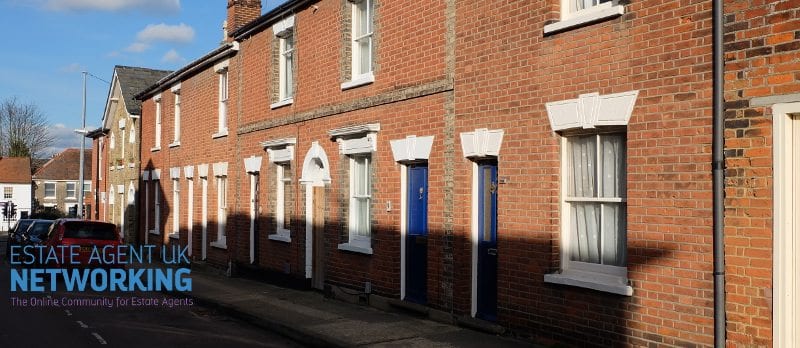Demand Resilient but Bank of England Rate Rises Biting
- The price of property coming to market falls by an average of 0.2% (-£905) this month, marginally below the 0% norm for this time of year, as new sellers temper their price expectations in response to rising mortgage costs and increasing buyer affordability constraints
- Recent Base Rate rises to combat stickier-than-expected inflation are biting, with the number of sales agreed now 12% behind 2019’s more normal market, in contrast to 2023’s better-than-expected first five months
- However buyer demand remains resilient, being 3% higher than 2019, with agents reporting that right-priced homes are still attracting motivated buyers due to a shortage of property for sale compared to historic norms
- The number of available properties for sale is 12% lower than at this time in 2019
- Rightmove research highlights the dangers of sellers initially over-pricing, with properties that need a reduction in asking price being more than 10% less likely to find a buyer than those that are priced right at the outset
- The average interest rate on Rightmove’s mortgage tracker for a five-year fixed, 85% Loan-To-Value mortgage is now 5.69%, up by 0.49% compared to this time last month, with agents reporting that some movers are pausing until they have more certainty that mortgage rates have stabilised
The average price of property coming to market drops by 0.2% (-£905) this month to £371,907, marginally below the 0% norm for this time of year as new sellers temper their price expectations in response to recent Base Rate rises and increasing buyer affordability constraints. Price trends have proved more resilient than most expected during the first half of the year, with average asking prices now 2.6% higher than in January. However, the brakes on the economy being applied by the Bank of England to combat the surprisingly sticky inflation figures are biting, with the number of sales agreed in June now being 12% behind 2019’s more normal market level, contrasting with the surprisingly strong first five months of the year. However, buyer demand remains resilient, being 3% higher than at this time in 2019, with agents reporting that right-priced homes are still attracting motivated buyers due to the shortage of property for sale compared to historic norms.
“The interest-rate brakes being applied more strongly to slow the economy are now beginning to bite in the housing market. While prices and sales bounced back this year much more strongly than most expected, the unexpectedly stubborn inflation figures and the surprise of further mortgage rate rises when many felt that they had stabilised, have contributed to the fall in prices and number of sales agreed. However, buyer demand remains resilient at 3% above 2019’s more normal market levels, buoyed by a shortage of quality property for sale and ongoing housing needs. First-time buyers, trader-uppers and downsizers with higher deposits and lower mortgage requirements appear to be still keenly searching the market, not wanting to miss out on the right property that is not over-priced and that they can still afford.”
Tim Bannister Rightmove’s Director of Property Science
The two larger home sectors have been most impacted by lower levels of agreed sales. The numbers of sales agreed in June in the mid-market second-stepper sector and the top-of-the-ladder sector are 14% behind 2019’s level. Some discretionary movers in these sectors who are trading up and are substantially increasing their mortgage are likely reassessing their budgets, waiting to see which direction mortgage rates head in the coming months.
The smaller home, two-bedrooms and fewer market sector has been less impacted, with June’s sales agreed figure 9% below 2019’s level. This typical first-time buyer sector has held up most strongly throughout the first half of the year, highlighting an ongoing determination from many first-time buyers to navigate the unsettled mortgage market and get onto the ladder, particularly with rents at record levels. It is also an indication of some people deciding to retire early and downsize to a smaller property, perhaps to release some equity from their home for lifestyle or early retirement, or to gift a deposit to family first-time buyers.
Despite this easing in sales levels there is no glut of property choice, with the number of available properties for sale 12% lower than at the same time in 2019. Agents report that even with market challenges, homes priced correctly in line with local market conditions are still attracting strong interest from motivated buyers keen to move. However, the dangers of sellers initially over-pricing and harming their prospects of finding a buyer are highlighted by the latest Rightmove research. Properties that need a reduction in asking price are more than 10% less likely to find a buyer than those that were priced right from the start. With the chances of selling already lower due to current market conditions, initial over-pricing reduces those chances markedly further.
The latest snapshot from Rightmove’s mortgage tracker shows that the average rate for a five-year fixed, 85% Loan-To-Value mortgage is now 5.69%, up by 0.49% compared to this time last month but still below October’s 5.89% following the mini-Budget.
“The continuing twists and turns of persistent inflation and higher mortgage rates have posed some additional challenges for the market. Agents report that some movers are pausing until there is more certainty that mortgage rates have stabilised, as well as reviewing how higher costs affect their plans. However, there remains a large volume of motivated buyers who can factor rate rises into their budgets and are continuing to enquire about homes for sale, which is keeping the market functioning, albeit now with lower sales levels than at this time in 2019. Sellers who price right the first time, rather than starting with too high an asking price only to reduce later, have a much better chance of attracting one of these motivated buyers, and a good local agent will provide sellers with accurate evidence of prices that are being achieved in their area.”
Tim Bannister Rightmove’s Director of Property Science









